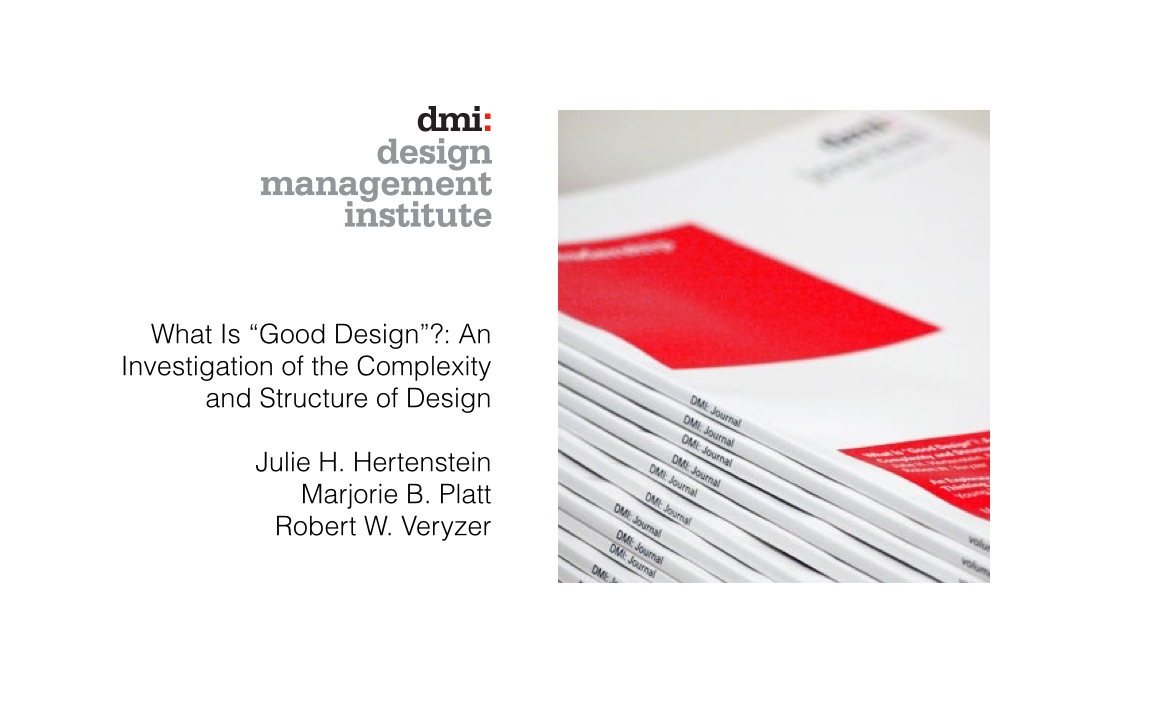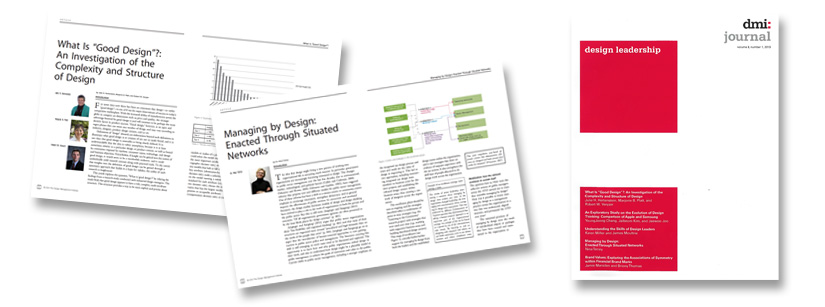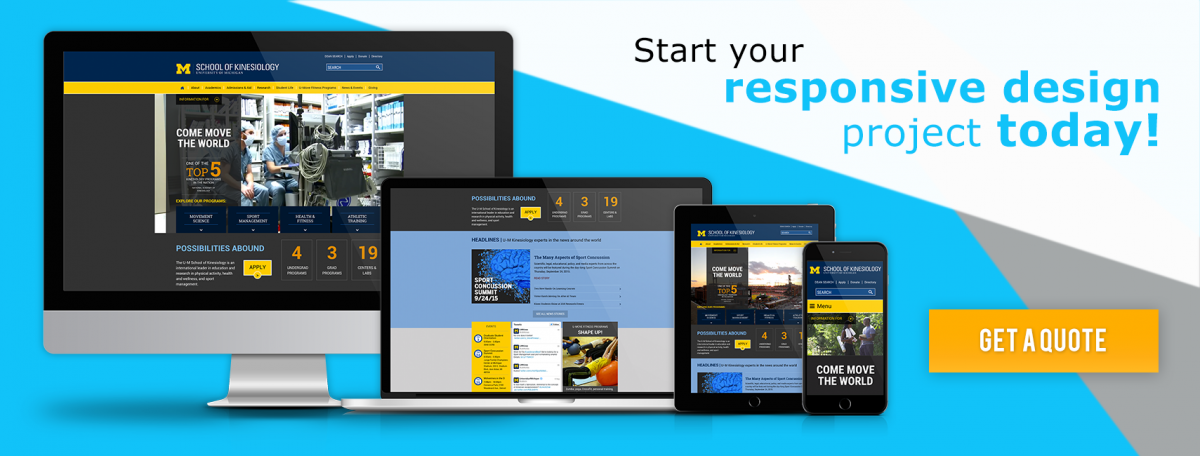 Posted by Shane Sevo on August 24, 2015
Posted by Shane Sevo on August 24, 2015Back in February of this year, Andrew Blanchard and I had the opportunity to facilitate a research driven design presentation by Matt Fletcher. The topic “What is good design?” was presented at the Speaking of Design meetup hosted at Atomic Object in Ann Arbor.
Matt builds custom software products with Atomic Object in Grand Rapids Michigan. With a masters degree in computer science, Matt is not intimidated by the analysis of academic research data. He is also a professional software developer working on projects that routinely bring him into contact with practical user experience and business technology concerns.
We had taken in his presentation earlier in the year at a Refresh Detroit meetup. This little design presentation tees up some classic debates between aesthetics and functionality. It also hints at the inherent tensions all design professionals live with. Business objectives typically place constraints on artistic desire.
Slideshare: What is Good Design? - A Research Driven Investigationfrom Commercial Progression
The Design Dilemma
Good design as an object of pursuit can feel like a mythical beast. The unicorn of “perfect design” is always around the corner and just beyond the next hilltop. Good design, however, is achievable and measurable. I believe this is what got us so excited about this presentation. As web designers and developers we love the intersections between aesthetics, data, and client deliverables.
We are constantly trying out a new tool or method for attaching measurable metrics to the work we do (in our last meetup we covered tracking analytics using Hotjar). The closer you get to the business side of the whole effort, the more naturally the work lends itself to spreadsheets of statistics and graphable tables of metrics.
The amorphous canvas of design all but disappears as you attempt to run your business by the numbers. But can you design by the numbers and get a good result? Human intuition and our instinctual response to beauty still seem to be at the heart of the mystery. Finding good design, whether its web design, print design, or industrial design can feel like the process of writing good poetry or painting a soulful image. The number of human intangibles and fickleness can seem overwhelming.
In this moment of overwhelming design anxiety, data can provide a solace, if not a guide to finding good design. If you are lost in the pursuit of good design, one simple way forward is to ask for some advice from those who have traveled before you.
( Image Credit: “What is Good Design?: An Investigation of the Complexity and Structure of Design.” as published in Volume 8 of the Design Management Journal)
Matt’s presentation focused on a collection of tabulated data from the Design Management Institute journal. DMI put together a survey of 109 design professionals at a 2012 Boston conference. They gave the designers a blank textual canvas to write in their own words an answer to the question:
“What is Good Design?”
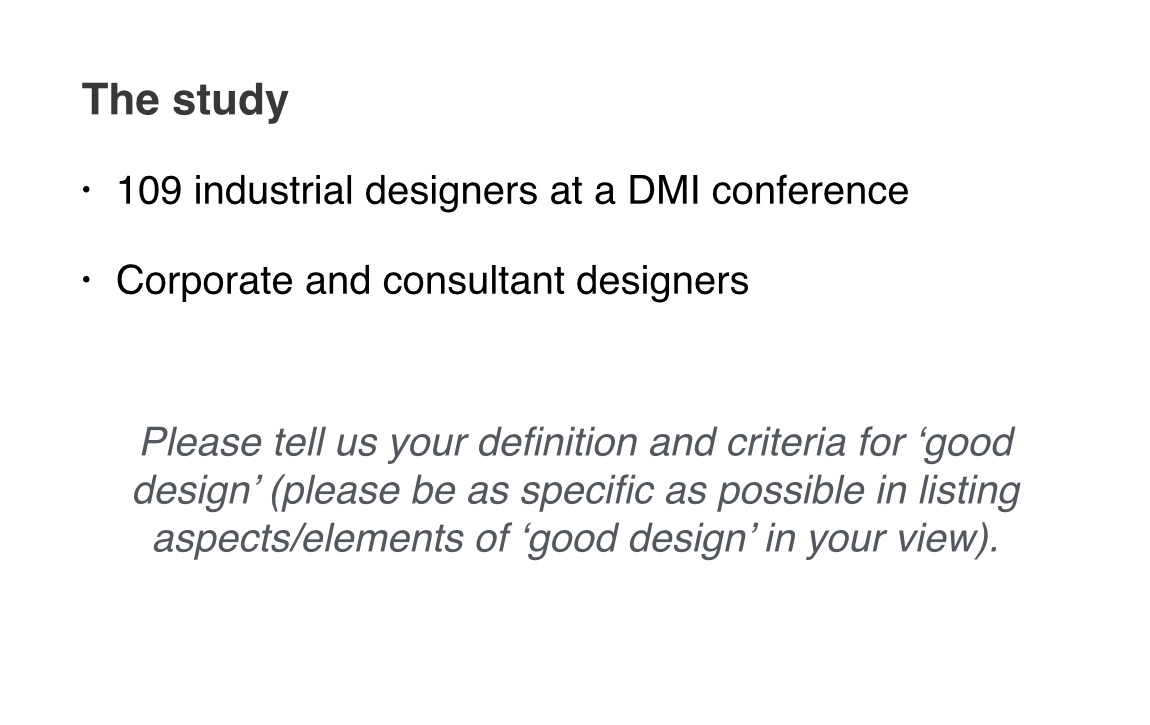
Since they did not ask for a response to “Perfect Design” or “The Best Design”, they received responses that were reasoned and multifaceted. These design professionals knew from seasons of experience that there is no silver bullet answer, but rather a spectrum of considerations that would need to be held in a lattice of tensions.
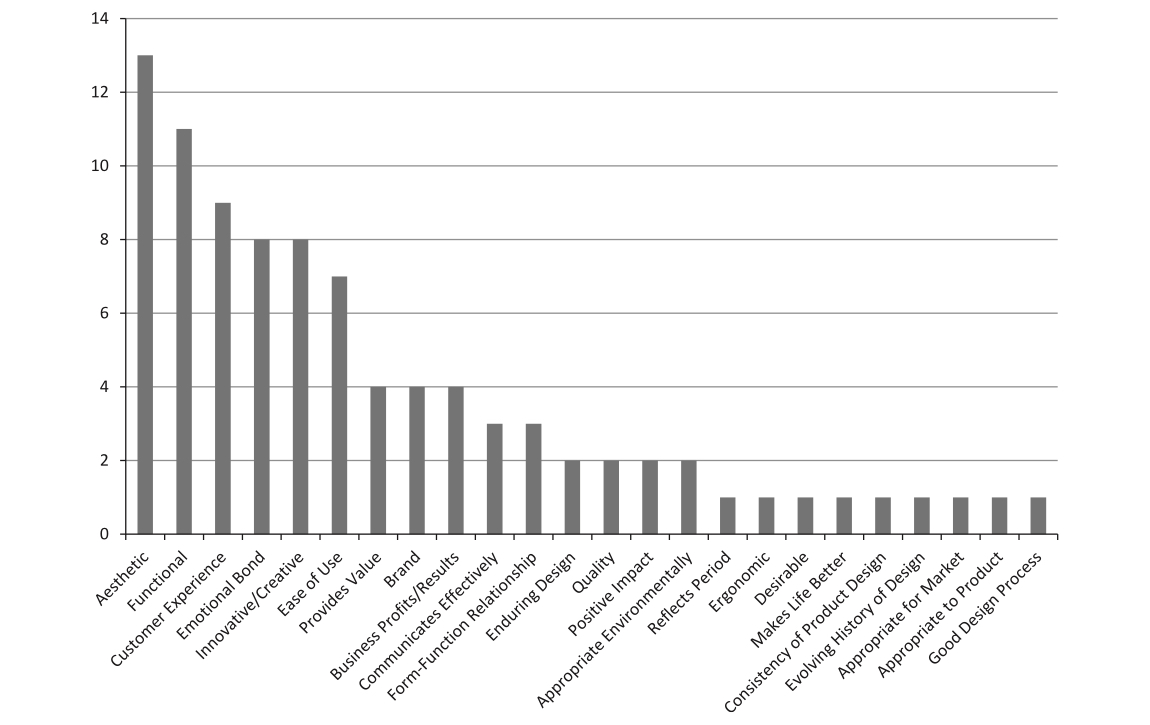 ( Image Credit: “What is Good Design?: An Investigation of the Complexity and Structure of Design.” as published in Volume 8 of the Design Management Journal )
( Image Credit: “What is Good Design?: An Investigation of the Complexity and Structure of Design.” as published in Volume 8 of the Design Management Journal )
The collection of responses were then subdivided by thought structure and grouped into categories. This ethnographic research approach is popular among the social sciences and allows for a question structure that is open at the outset; avoiding primed answers or narrow echo chambers of discussion.
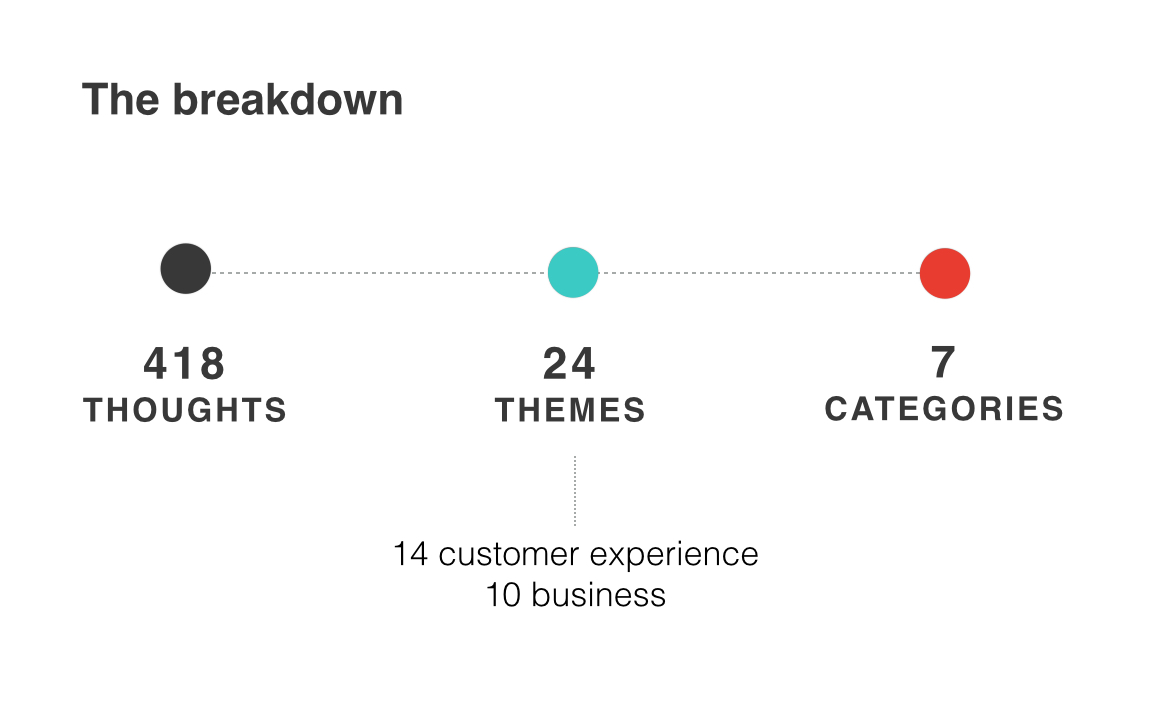 ( Image Credit: “What is Good Design?: An Investigation of the Complexity and Structure of Design.” as published in Volume 8 of the Design Management Journal )
( Image Credit: “What is Good Design?: An Investigation of the Complexity and Structure of Design.” as published in Volume 8 of the Design Management Journal )
Being Objective about our Subjectivity
Turns out that our thoughts about “good design” can be organized into a smaller set of themes and then compared to different areas of design and business focus.
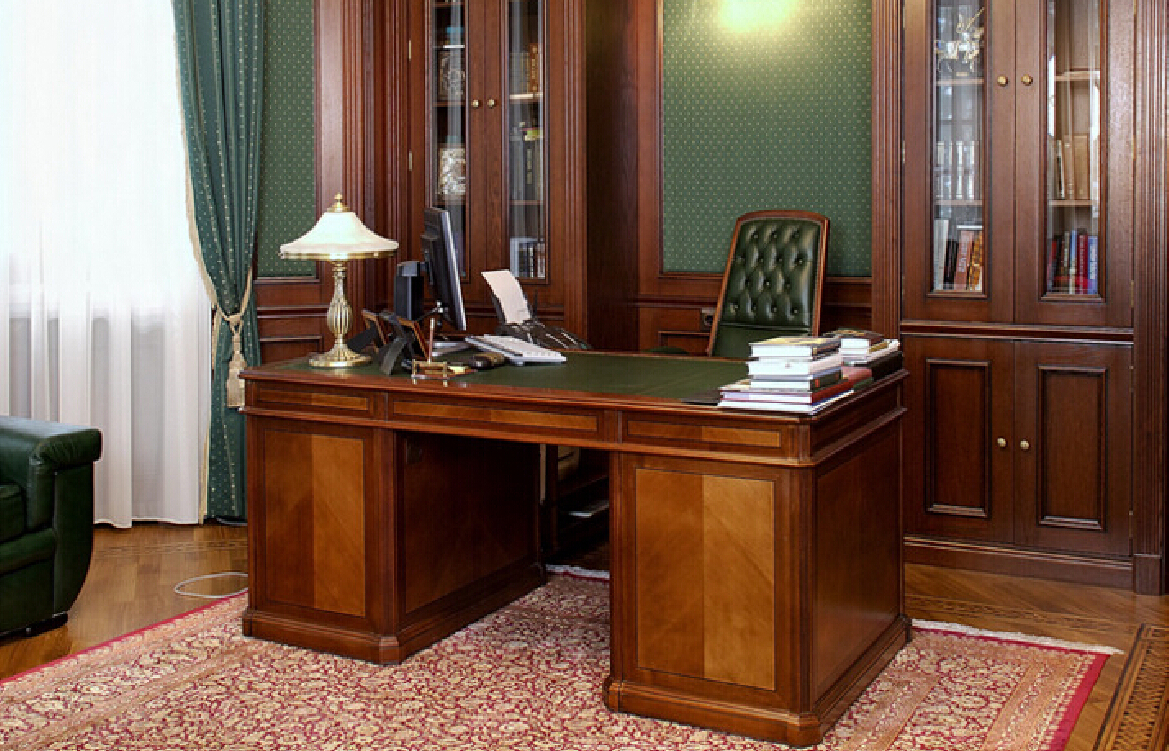
If you are sitting behind the CEO’s mahogany desk, then you are well acquainted with the overarching business goals and you know the product will never be made if the profit margin is too low or any step in the design process stops making fiscal sense.
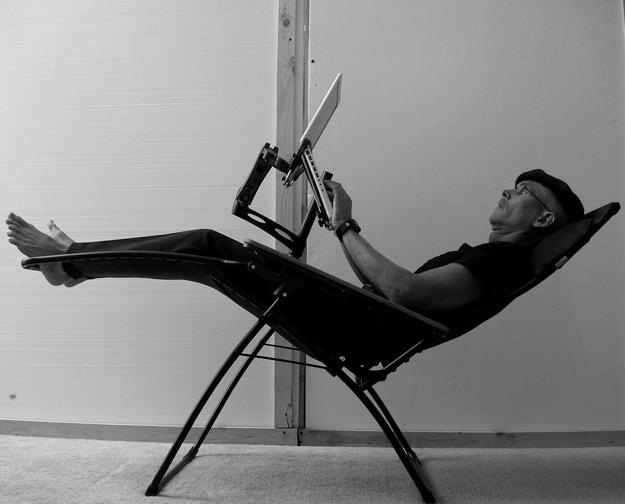 ( Photo: Lauritzen Ergonomic Workstation )
( Photo: Lauritzen Ergonomic Workstation )
If you are sitting in an ergonomic zero gravity chair, then you may be prone to design for an audience that you inherently sympathize with. Designers want to create an ideal end user experience that they wish was afforded to themselves. These tensions exist inside of every enterprise, whether it be a single mind or a corporate structure of thousands.
Good Design Data Themes
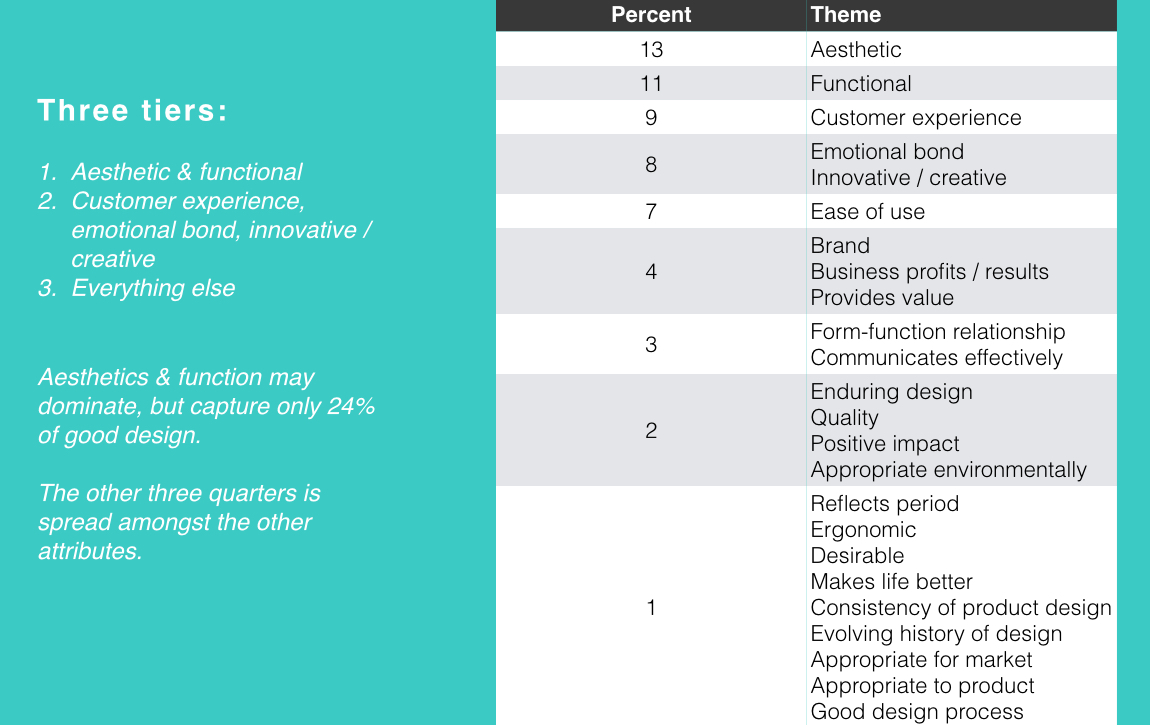 ( Image Credit: “What is Good Design?: An Investigation of the Complexity and Structure of Design.” as published in Volume 8 of the Design Management Journal )
( Image Credit: “What is Good Design?: An Investigation of the Complexity and Structure of Design.” as published in Volume 8 of the Design Management Journal )
Matt did us a further service by chunking out the main concerns into three tiers and then grouping the themes based on their percentage of respondents. Aesthetics and functionality are natural contenders for the top of the argument pile. But, this analysis is quick to point out that these two chief design parameters still only account for about one quarter of the overall “good design” characteristic spectrum.
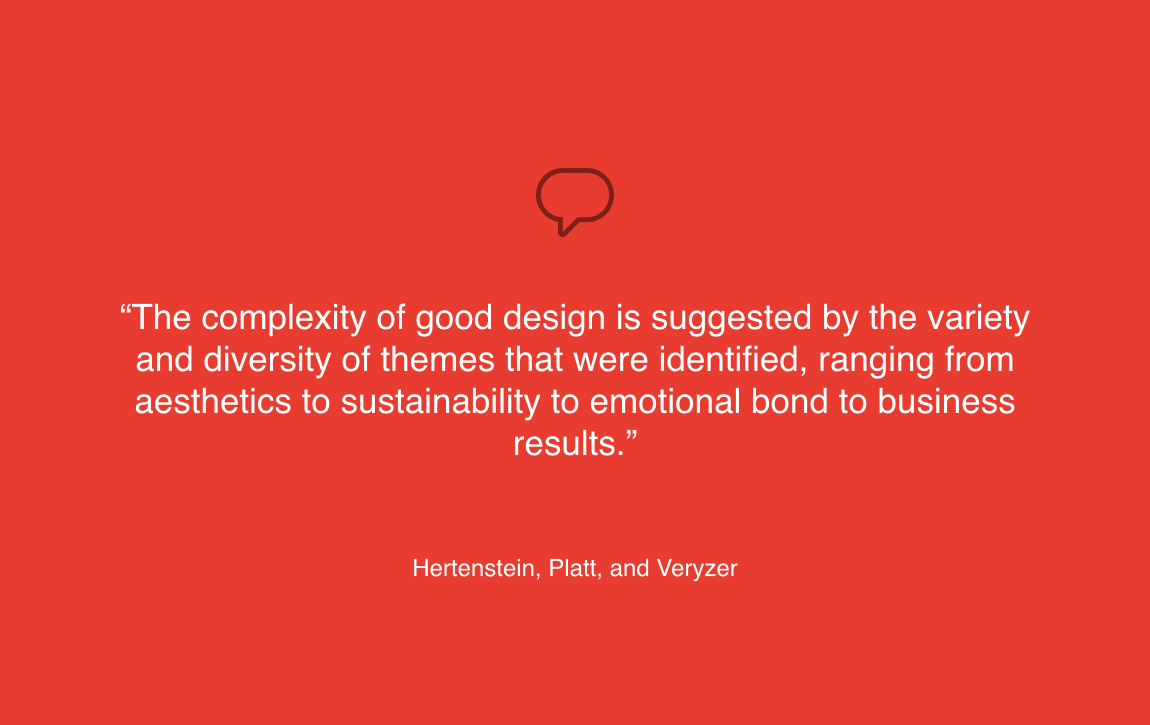
The results of the survey start to emerge in statements that ring true to what we may have been able to intuit at the outset. “Good design” is arrived at through an artful balance of many factors.
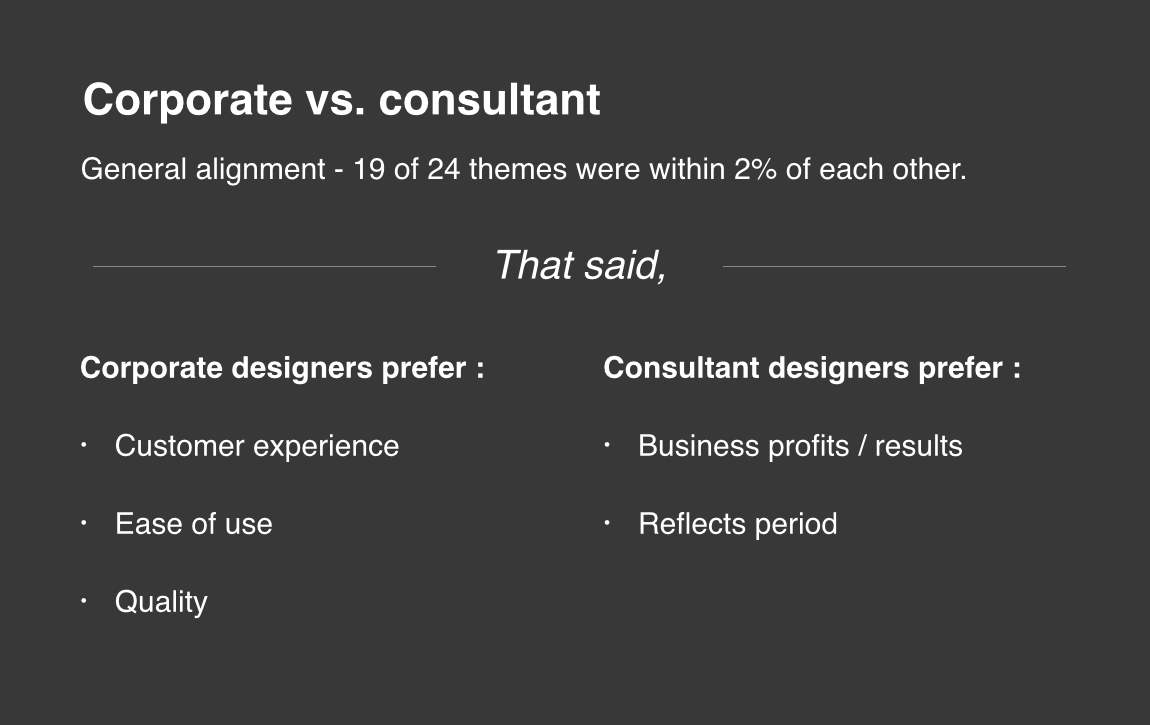
Professional Design Tensions
Depending on which side of the process and industry you begin at, you will have a natural bias in that direction. We need a multifaceted design approach with participant advocates for both the end user experience (customer satisfaction) and the quarterly returns (business goals).
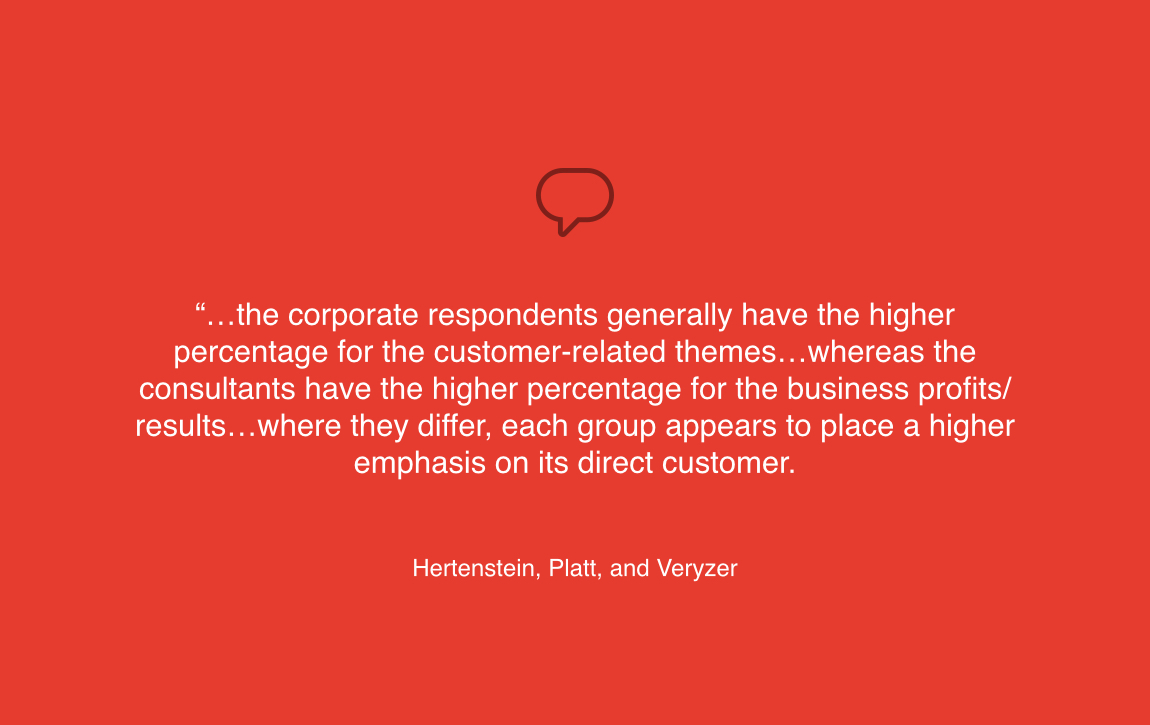
These tensions emerge constantly within web design projects. The discussion is always in motion and being moved around the spectrum based on the propensities of the players. Designers want to create an original and satisfying experience for the end user. Within each designer is a temperament that is searching out raw aesthetic beauty and intuitively favorable user experience. Form and function go together and are complements of each other, not combatants.
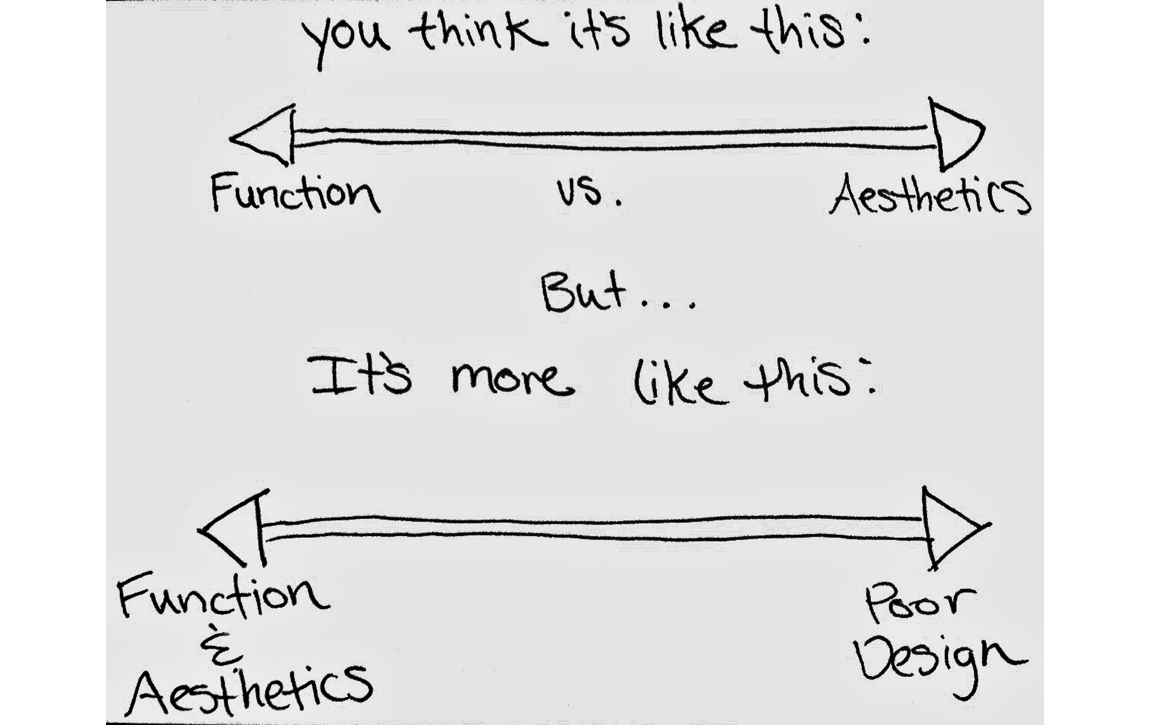
These simple revelations are at once profound and meaningless. “Yes, of course I want the best of both worlds… give me something that is useful and beautiful!”
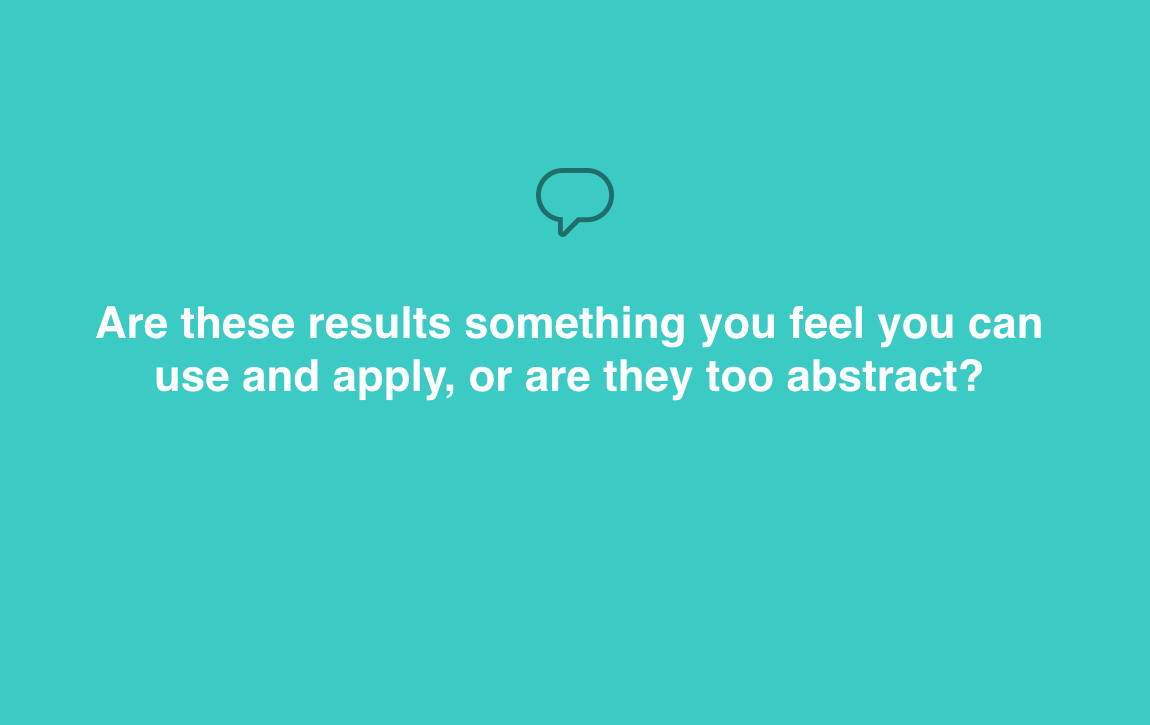
What is Good Web Design?
Matt was well aware of this apparent philosophical trap as he opened the floor to discussion. Our Speaking of Design meetup group came alive in the discussion with a flurry of hunches, case studies, and anecdotal experiential data points (check out the youtube video for Q&A interaction). The community of design does wrestle with the best way forward in finding out “what is good design”.
For us at Commercial Progression, this is why the team approach is so important. As seasoned Drupal web designers, we come into every project with hard won expertise and honed instincts.
"Most young designers create from the gut or that internal "looks good" instinct. As you gain more experience you realize your instincts can only get you so far. Working with a set of goals and data should become a critical part of your "good design" process."
~Andrew Blanchard, Creative Director at Commercial Progression
Our clients have their own collection of industry perspective and data to contribute to the creation of the new design. We come alive when we find open partnerships to explore the meaning of good design in the context of project goals.
We have learned that each web design project must focus on a set of measurable business goals and outcomes for the client. Good design must be employed towards improving these metrics if the overall project is going to be considered successful.
We are continually refining the process for establishing well defined measurable design goals for each project. This should be done early on in the design process and then revisited at each major milestone to ensure the design is still focused on achieving the desired project goals.
None of us want to be on a treadmill of design mediocrity. Having a process that guides you towards the discovery of good design in fresh ways for each project is key. Having the time and candor for meaningful discussion and analysis by all stakeholders is invaluable.
And to that end, we are thankful to Matt, DMI, and our local Michigan design community who are continuing to carry the design conversation forward.
More about DMI and the source research data
Special thanks to DMI for providing the source research paper “What is Good Design?: An Investigation of the Complexity and Structure of Design.” as published in Volume 8 of the Design Management Journal. If you found this content meaningful, consider joining DMI with a professional membership.
DMI Journal Contributing Members
